15 Wildflowers that Grow in Kansas: Identification Guide (With Pictures)
-
Cassidy Sutton
- Last updated:
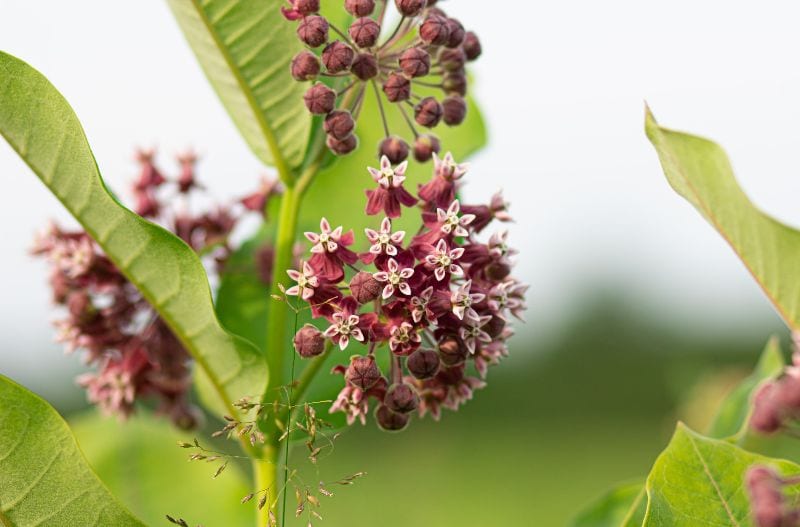
When you’re down reading this guide, you will want to put the phone away and head outside. The Sunflower State offers some of the most exquisite colors and flower shapes, luring in more colors from birds around the country.
In this post, you will learn about 15 of the most common wildflowers that grow in Kansas and how to identify them. This isn’t a comprehensive list—you would need a book for that—but we’ve done our best to narrow it down to 15 stunning contenders!
The 15 Wildflowers that Grow in Kansas
Spring
Springtime in Kansas is one of the year’s most gorgeous and uplifting seasons. New budding wildflowers usher in the promise of beautiful weather and garden joy. Here are some wildflowers to watch for come spring:
1. Virginia Bluebells
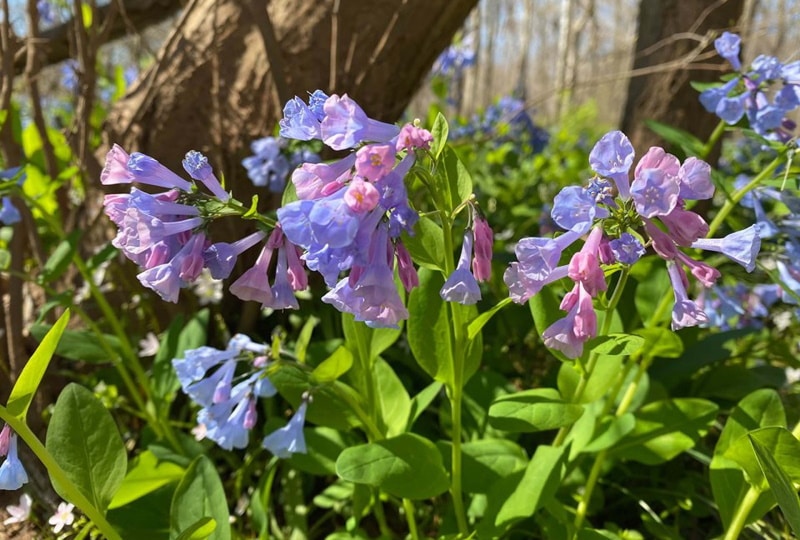
| Scientific name: Mertensia virginica | Height: 10 to 28 inches |
| Family: Boraginaceae | Type: Perennial |
| Flowering Period: March to May | Habitat: Moist woodland clearings, water banks |
Also called Virginia Cowslip, Bluebells stand tall with egg-shaped leaves and adorning blue, bell-shaped flowers. Each flower has five petals that fuse to form the bell shape. The leaves are about 2 to 8 inches long and slightly blunt at the end, while the stem is minimally branched (often unbranched).
Native Americans would steep the roots and use the liquid to battle poisoning and venereal diseases. They would also treat whooping cough and tuberculosis, although the plant’s medicinal properties haven’t been widely explored.
2. Wooly Verbena

| Scientific name: Verbena stricta | Height: 1 to 5 feet |
| Family: Verbenaceae | Type: Perennial |
| Flowering Period: June to September | Habitat: Dry soils, roadsides, waste areas, farmyards |
Wooly Verbena is a tall, stout flower that blooms in spring and carries into early fall. The stem is caterpillar-like with small spikes, while the leaves are oval-shaped with pointed tips. From afar, the purple flowers look like tiny purple balls. However, the petal tips are sharply pointed, overlapping each other in a dense formation.
Cattle don’t care for Wooly Verbena’s bitter flavor, so the flower often grows across prairie and farmland without hesitation. The plant is also drought-resistant, thanks to its 12-foot-long roots.
3. Wild Violet
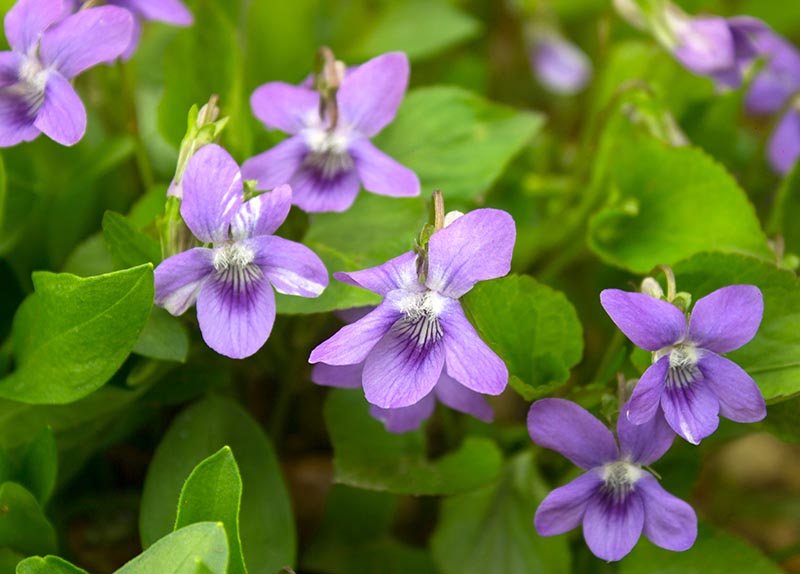
| Scientific name: Viola nephrophylla | Height: 2 to 12 inches |
| Family: Violaceae | Type: Perennial |
| Flowering Period: March to May | Habitat: Moist areas, open woods, roadsides, waste areas, prairie hillsides |
Also known as Blue Prairie Violet and Butterfly Violet, Wild Violet grows throughout Kansas in moist areas. It doesn’t flower for long, but the color is beautiful, nonetheless.
Compared to other Kansas wildflowers, wild violets are short flowers that grow close to the ground like squash. They’re considered stemless with showy flower heads and varying petal shapes. Each flower has five petals.
Early settlers would use the leaves as jelly or tea to treat headaches and sore throats. Of all the Wild Violets, Blue Violet is the most harvested. Even the leaves can be used in salads.
4. Wild Parsley

| Scientific name: Lomatium foeniculaceum | Height: 4 to 15 inches |
| Family: Apiaceae | Type: Perennial |
| Flowering Period: March to April | Habitat: Dry, open prairie, rocky limestone or chalk soils |
Wild Parsley is another stemless perennial that grows in the Eastern two-thirds of Kansas. Wild Parsley only flowers in March and April and can be harvested for culinary purposes. The leaves are hairy and pointed, while the flower heads are small and yellow, grouped into small ball-shaped sections.
5. Plains Wild Indigo

| Scientific name: Baptisia bracteata | Height: 8 to 30 inches |
| Family: Fabaceae | Type: Perennial |
| Flowering Period: April to May | Habitat: Sandy, rocky prairie, roadsides |
Plains Wild Indigo can grow upward or outward. The stem is silky and hairy, while the leaves are long ovals. The flowers are also oval-shaped, looking similar to pistachio nut shells. You’ll usually find Plain Wild Indigo in rocky or sandy areas.
Plains Wild Indigo only blooms in April and May. Still, it’s a blessing in disguise since it’s toxic to livestock if consumed in large quantities. You can find this flower in the eastern half of Kansas.
6. Plains Prickly Pear

| Scientific name: Opuntia macrorhiza | Height: Up to 6 inches |
| Family: Cactaceae | Type: Perennial |
| Flowering Period: May to June | Habitat: Dry, rocky prairie |
You may not think a cactus could grow in tornado alley, but Prickly Pears love the sunflower state, especially during droughts. The hot, harsh sun and dry, rocky hillsides are perfect for a Prickly Pear to produce flowers.
The Prickly Pear has flat, tear-shaped pad segments with spikes. During the flowering season, the showy, tunnel-shaped flowers grow on top of the pads for wild birds and humans to eat.
7. Prairie Larkspur
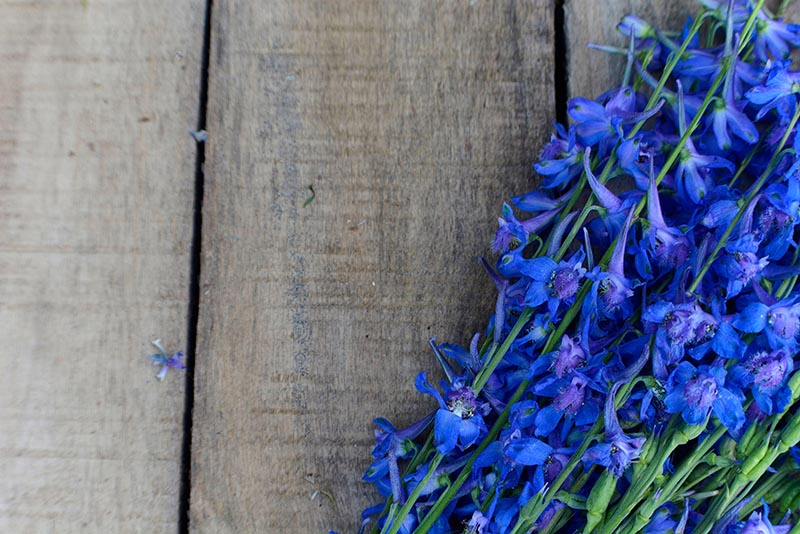
| Scientific name: Delphinium carolinianum | Height: 1 to 4 feet |
| Family: Ranunculaceae | Type: Perennial |
| Flowering Period: May to June | Habitat: Open prairie, pasture, and hillsides |
Also called Plains Larkspur, Prairie Larkspur grows tall and proud. The stem is semi-hairy, and the leaves are small and rounded, with pointed tips extending toward the bottom of the stem. The flowers are long and wispy, opening proudly to expose the stamens. You can find Prairie Larkspur growing throughout Kansas.
Although the plant is beautiful, its sweet taste is dangerous to cattle. All parts of the plant are toxic, whether fresh or dry.
Summer
Summer is the season for sun-loving flowers and dazzling pollinators. Most flowers like to flower during this time, so you’ll see several wildflowers flaunting their petals. Here are some common Kansas wildflowers to spot during the summer:
8. Wild Bergamot
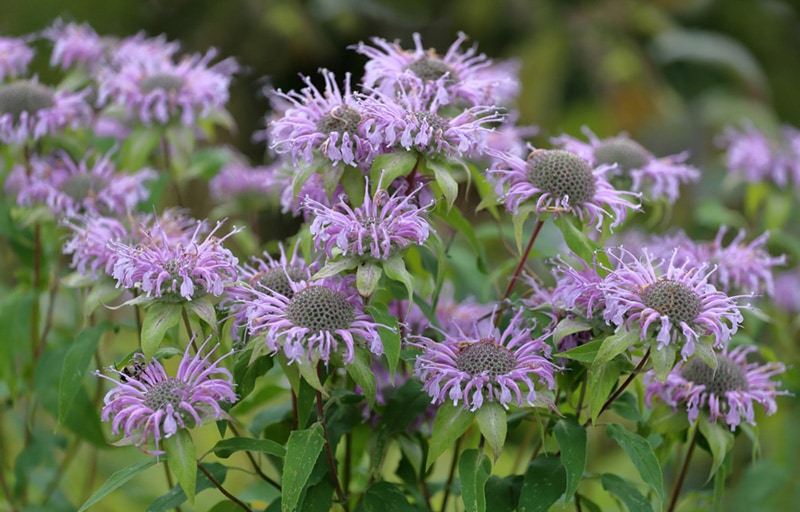
| Scientific name: Monarda fistulosa | Height: 1 to 4 feet |
| Family: Lamiaceae | Type: Perennial |
| Flowering Period: June to August | Habitat: Rocky prairie and pasture, thickets, water banks, roadsides |
Also called Mint-Leaf Bee Balm, Wild Bergamot stands tall and proud with bursting purple flowers. The leaves are long and ovate, curving slightly to form a boat shape. Both the petals and leaves are somewhat hairy.
The petals are long and wavy, curving over the receptacle (base of the flower head) and allowing the stamens to stretch toward the sky. It’s no wonder why bees love this flower.
Native Americans used the plant to treat coughs, colds, fevers, and stomach pains. The aromatic flowers create delicious tea and fragrant perfume.
9. Common Milkweed
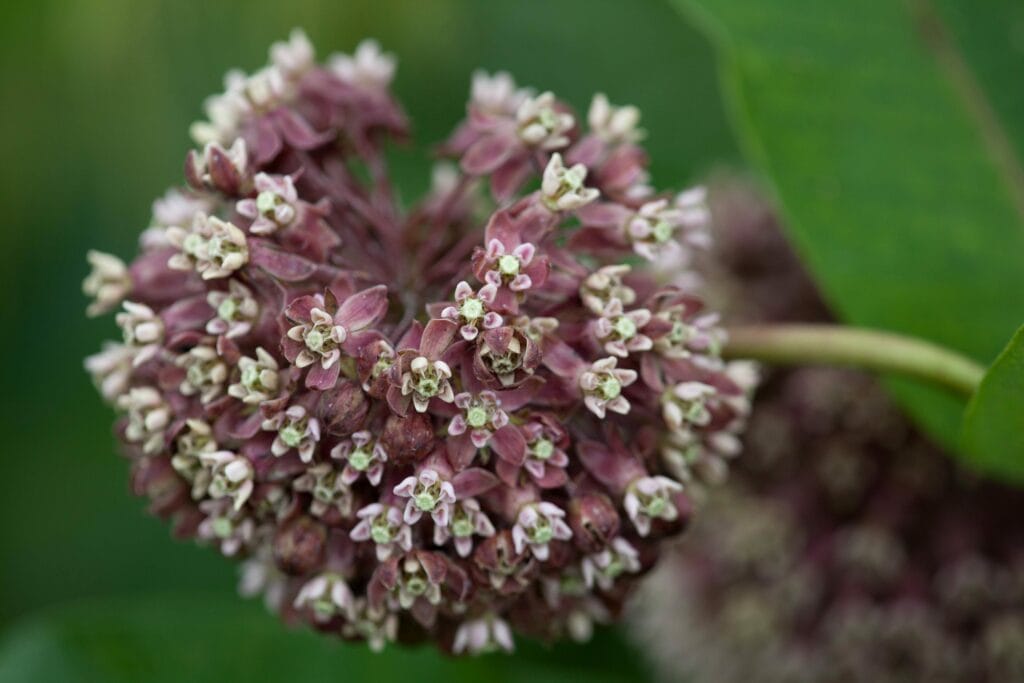
| Scientific name: Asclepias syriaca | Height: 2 to 5 feet |
| Family: Apocynaceae | Type: Perennial |
| Flowering Period: June to August | Habitat: Water banks, roadsides, woodlands, waste area |
Also called Milk Plant and Wild Asparagus, Common Milkweed is well-known for attracting the Monarch Butterfly. The flowers peel apart opposite the sepal (bottom leaves) and are slightly egg-shaped. The flower tips are blunt and hairy/wooly in different areas.
Common Milkweed can be eaten but is toxic in its raw state. Native Americans would boil the shoots first before consuming them.
10. Eastern Purple Coneflower
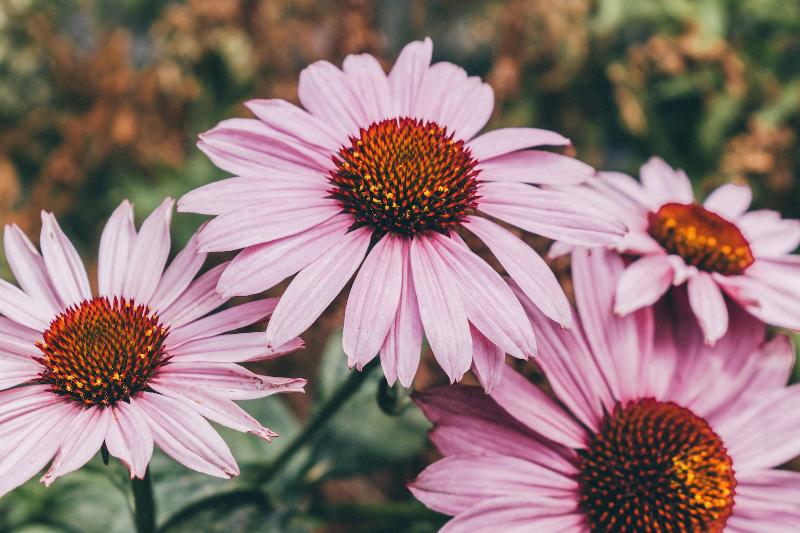
| Scientific name: Echinacea purpurea | Height: 10 to 48 inches |
| Family: Asteraceae | Type: Perennial |
| Flowering Period: June to August | Habitat: Rocky, oak-hickory forests, and woodlands |
Eastern Purple Coneflower can be easily identified with its distinctive conical center. The plant only has a few flower petals, with the center being the sole focus for all kinds of pollinators. Bees and butterflies can’t get enough!
Coneflower is a true native plant of Kansas. Native Americans would create root infusions to treat venereal disease and would chew the roots raw for coughs.
11. Compass Plant

| Scientific name: Silphium laciniatum | Height: 3 to 10 feet |
| Family: Asteraceae | Type: Perennial |
| Flowering Period: July to September | Habitat: Dry prairie hillsides, sandy, and rocky soil |
The Compass Pant is part of the sunflower and daisy family. The stems are tall, stiff, and hairy, and the bright yellow flower heads open proudly toward the sun. You could easily mistake Compass Plant for a sunflower if you didn’t know better.
The difference is in the leaves, petals, and overall height. For instance, Compass Plant is shorter compared to Common Sunflower. The leaves resemble a feather, and the petals are slightly thinner.
12. Common Sunflower
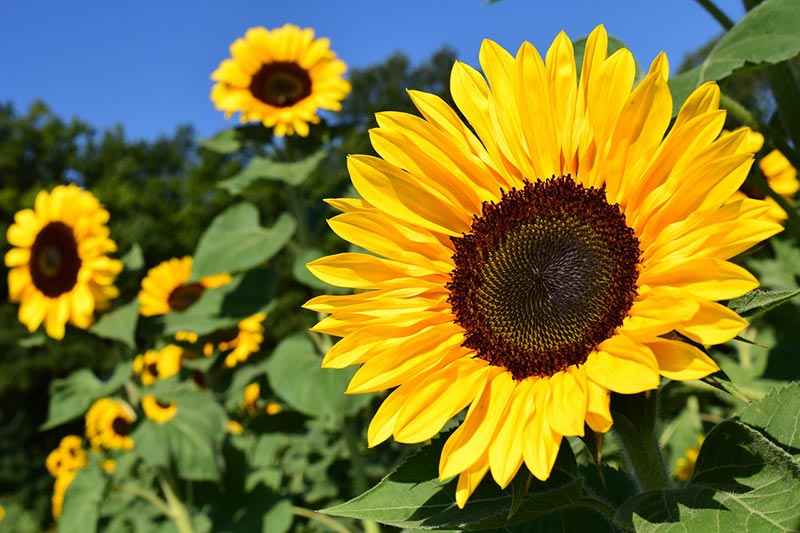
| Scientific name: Helianthus annuus | Height: 2 to 12 feet |
| Family: Asteraceae | Type: Annual |
| Flowering Period: July to September | Habitat: Open fields, roadsides, low moist ground |
As the official state flower of Kansas since 1903, the Common Sunflower stands proudly throughout Kansas everywhere. You can commonly find these flowers along roadsides and in fields. Sunflower stems are thick, hairy, and rough while branching upward. The leaves are heart-shaped and are slightly toothed around the edges.
Common Sunflower is highly versatile, often used for food, dyes, cattle feed, coffee substitutes, and more.
Fall
When most flowers die away, a few flowers stick around to show off their gorgeous colors. Here are a few common wildflowers you may find throughout the state:
13. Aromatic Aster
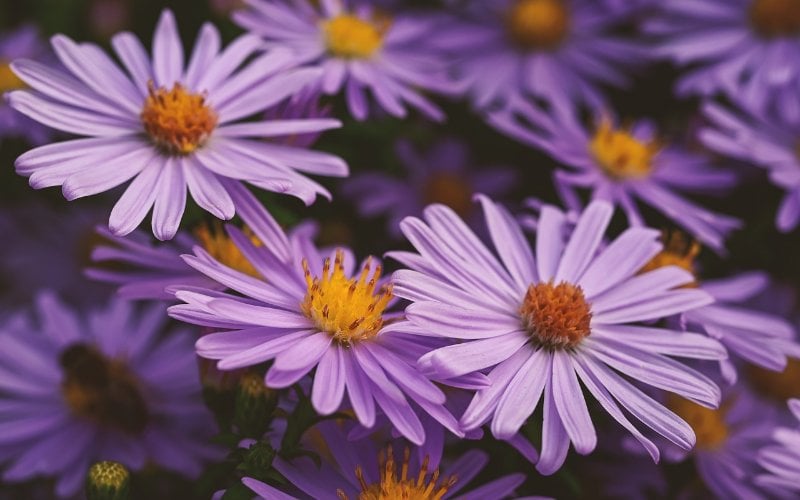
| Scientific name: Symphyotrichum oblongifolium | Height: 6 to 18 inches |
| Family: Asteraceae | Type: Perennial |
| Flowering Period: September to October | Habitat: Dry, rocky, or sandy open areas, usually hillsides |
Part of the sunflower family, Aromatic Aster grows upward toward the sun, often found growing with Silky Aster. The stem is highly branched with much old and new growth sprouting in different areas. The leaves grow toward the flowerhead on the stem and usually die away when the plant begins to flower.
The flower petals are long and thin, known as ray florets. Each flower head holds about 30 petals. When searching for this plant, you can find Aromatic Aster throughout Kansas, except in the lower southeast corner.
14. Jerusalem Artichoke
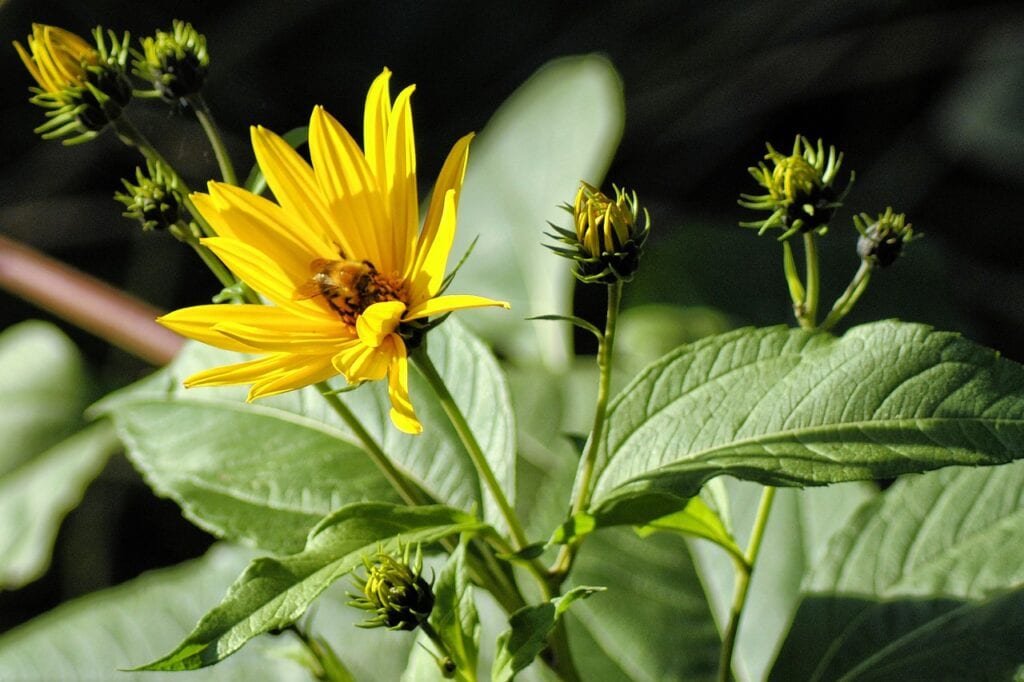
| Scientific name: Helianthus tuberosus | Height: 3 to 10 feet |
| Family: Asteraceae | Type: Perennial |
| Flowering Period: August to October | Habitat: Moist areas, along streams, roadsides |
Another sunflower-family friend, Jerusalem Artichoke grows in moist areas, unlike other related flowers. You can find this flower in the eastern part of Kansas.
The stem is erect and hairy, branching at the top. The leaf shapes can vary but are usually long, ovate, and droopy. The petals are ray florets, changing from yellow to orange in the center. Native Americans would cook the tubers in several ways, and sometimes eat them raw.
15. Rigid Goldenrod
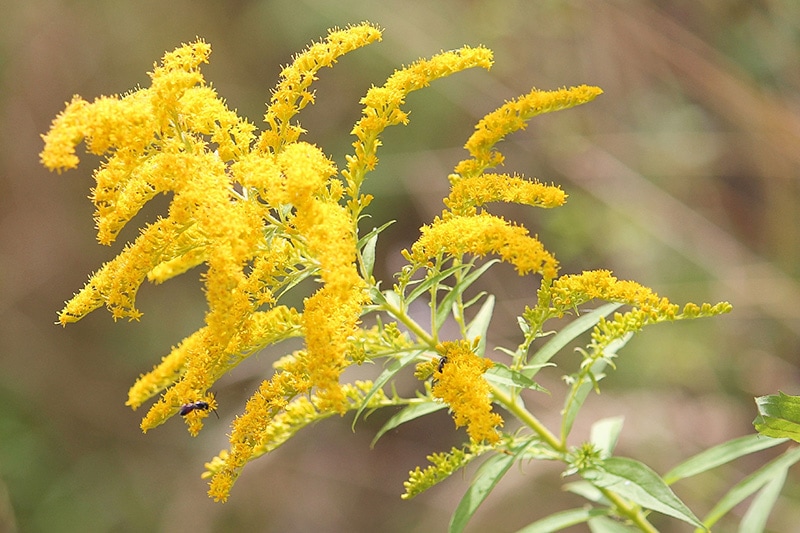
| Scientific name: Solidago rigida | Height: 1 to 5 feet |
| Family: Asteraceae | Type: Perennial |
| Flowering Period: August to October | Habitat: Dry open prairie or pasture, hillsides, sandy or rocky areas |
Rigid Goldenrod provides beautiful shades of yellow throughout fall. Part of the sunflower family, this flower looks a little different compared to the other sunflower cousins. The stem is thick and smooth, and the leaves alternate as they move up the stem.
Like most sunflower cousins, the flowers are ray florets but are tiny. You can find this plant everywhere in Kansas except near the Colorado border.
Conclusion
Now you know 15 wildflower species in Kansas. Either go out and find these flowers or plant them in your garden. The colors and shapes offer so much diversity and life to your backyard and help the ecosystem. You’ll be amazed by how many pollinators invite themselves over!
Featured Image Credit: Lasclay, Unsplash
Contents
